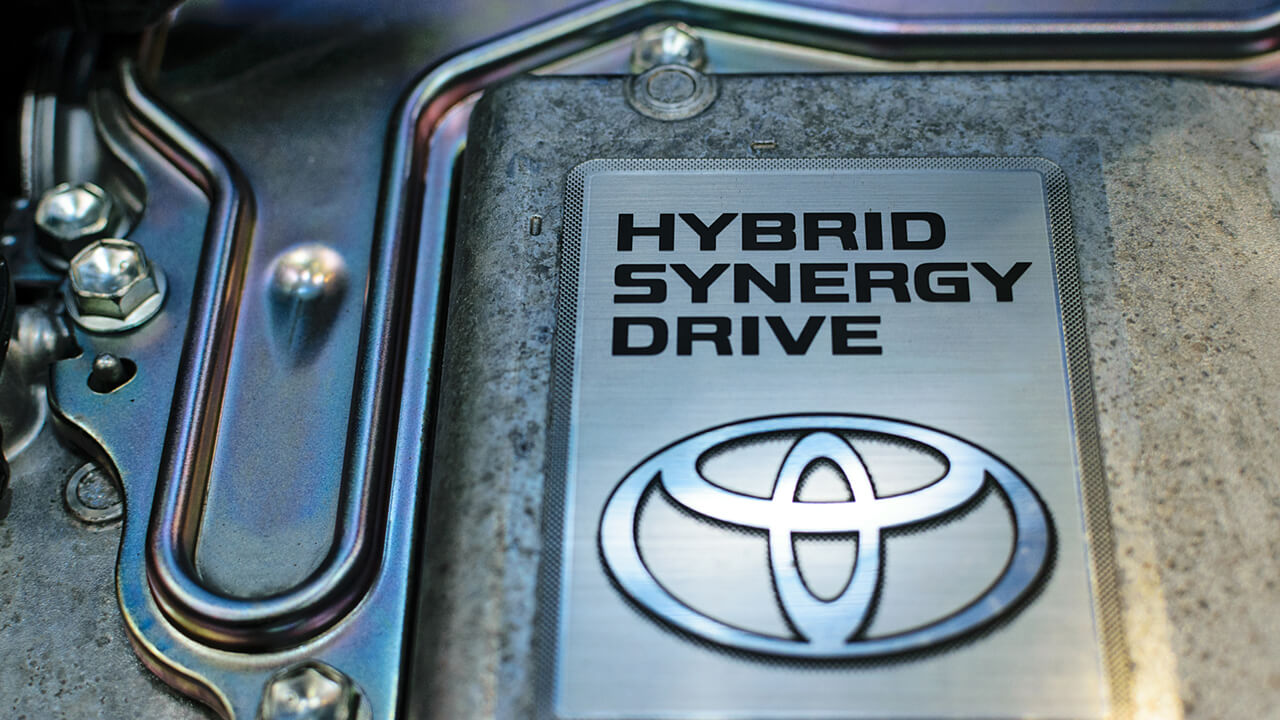Hybrids have been quietly humming on the roads for about 20 years now. We all know about their benefits – fewer emissions and more miles per gallon. But do you know how they actually work?
If you don’t, you're not alone. Hybrid technology may seem difficult to understand with its nuances, but the truth is that the system runs on simple principles. There’s a method to the madness, and we’ll explain all of it – including Toyota’s unique brand of hybrid technology.
How is the car powered?
Gas-powered and electric-powered vehicles use the same tactics to move the car. However, the power comes from different sources. A gas-powered car siphons fuel from the tank to power the engine, which turns a transmission to turn the wheels. With an electric car, batteries provide power to the engine, which then turns the wheels the same way.
Hybrid technology, however, is the best of both worlds. It has a gasoline engine, which is usually smaller than those in gas-powered vehicles, and an electric motor.
 The inside of a 2021 Highlander hybrid may look like a mess of wires, but it works on basic principles to move the car in a more eco-friendly way.
The inside of a 2021 Highlander hybrid may look like a mess of wires, but it works on basic principles to move the car in a more eco-friendly way.
These two sources of power combine in different ways in different models to move the car. Sometimes, the engine and electric motor turn the transmission at the same time to power the car. Other times, the gasoline engine powers a generator that charges the batteries or triggers the transmission.
How do the batteries work?
There are two kinds of hybrids – a plug-in hybrid and a self-charging hybrid. Self-charging hybrids are becoming more and more common due to their convenience. In Toyota’s 2021 hybrid model lineup, eight models are offered in hybrid, with the RAV4 and Prius also offering a plug-in hybrid option.  Most hybrids don’t plug in, but those that do can sustain themselves on electric energy for much longer.)
Most hybrids don’t plug in, but those that do can sustain themselves on electric energy for much longer.)
The battery in plug-in vehicles primarily charges by someone plugging it in at a charging station. These vehicles can operate solely on electricity for longer, usually about 30 miles before the gas kicks in. Hybrids that don’t plug in can’t sustain themselves on the battery alone for that long but still use electricity power alongside fuel power.
No matter if it plugs in or not, hybrids have an alternate way of charging the battery. When the vehicle brakes, it can convert that kinetic energy to power the battery in a process called “regenerative braking.”
How can hybrids produce fewer emissions and more miles per gallon?
Everyone knows about hybrid cars’ two best perks – fewer emissions and better gas mileage. But how does the technology pull it off?
As mentioned above, hybrids have a smaller gas-powered engine than other cars, which already helps. Combined with the help of the battery, it doesn’t have to use as much gas, which means the vehicle produces less carbon dioxide overall. The vehicle can sometimes shut the gas engine off completely and simply rely on the battery, like when the driver stops at a red light.
Hybrids get better gas mileage for similar reasons. When some of the energy going toward moving your car is coming from a battery instead of gas, it makes sense that you will get more bang for your buck in the fuel department. Most hybrid models boast more than 10 extra miles per gallon when compared to their non-hybrid counterparts.
What is Toyota’s Hybrid Synergy Drive System? Toyota’s Hybrid Synergy Drive System is unique because it connects the generator, electric motor and gasoline engine into one cohesive unit.
Toyota’s Hybrid Synergy Drive System is unique because it connects the generator, electric motor and gasoline engine into one cohesive unit.
Toyota has been at the forefront of hybrid technology ever since the Prius made its global debut in 1997. Now, those innovations have led to the Toyota Hybrid Synergy Drive System.
This system automatically switches between electric and gas power as needed, making for a conservative yet effective driving experience. The trick is the Power Split Device, a series of gears that connects the gasoline engine, generator and electric motor. Because of this connection, the car can operate on gas alone, electricity alone or both combined. It can also divide – or "split"– the engine's energy between charging the generator and powering the rest of the car.
When you’re driving slowly, the engine uses the generator to charge the battery. The engine can turn off when the car stops. In models like the 2021 Venza, the vehicle shows these energy flow changes at any given moment through a touchscreen visual.
Hybrids – easy to drive, and now easy to understand
Although hybrids may seem complicated, they actually use the same concepts as a traditional combustion engine vehicle – just in a different way. Hybrids are often stereotyped as too slow or faulty, but these are often misconceptions. In fact, many of Toyota’s hybrid vehicles outpower their gas counterpart and require less maintenance.
If you’re interested in a hybrid vehicle, check out a local Toyota dealer near you.

